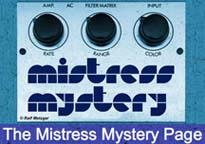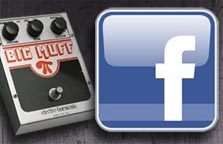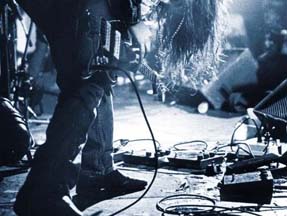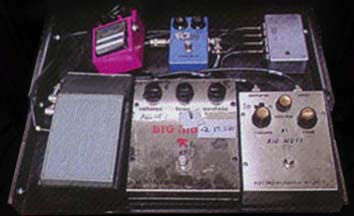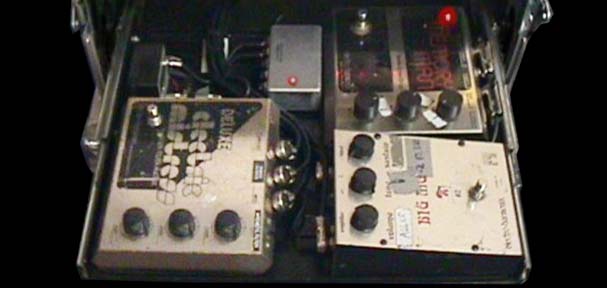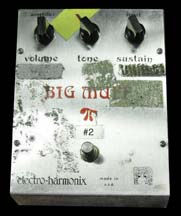The Big Muff π Page
The Definitive Big Muff Resource and History
VISIT THE KIT RAE SWORDS, KNIVES and FANTASY ART WEBSITE www.kitrae.net

It is hard to believe that there may be some people today that may not know who the legendary J Mascis is, or who have never had the pleasure to hear his music, so here is a quick introduction. J (the J is short for Joseph) is an American songwriter, singer, guitarist, drummer, producer, and skateboarder (among other things), born in Massachusetts, and his favorite color is purple. He is probably most well-known for the work created for his legendary band, Dinosaur jr. Beginning in the mid 1980s, J's signature blast of melodic guitar sounds in Dinosaur and his scratchy vocal style defined a sound that has influenced numerous other bands. Often referred to as an “underrated” guitarist these days, J may not be as well-known as some of the guitar giants, but to his legion of fans who have followed his work, and his peers in the music industry, he is a giant. From his thunderous, punk rock power chords and complex rhythm playing, to his volcanic and melodic solos, J is in a class all his own. J is also in a sonic class all his own. He likes to play really LOUD.
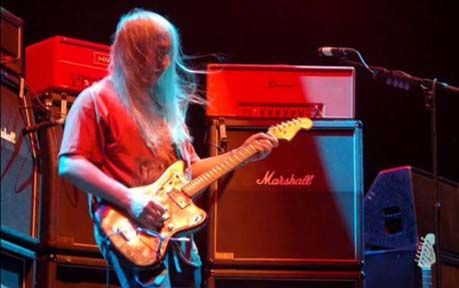
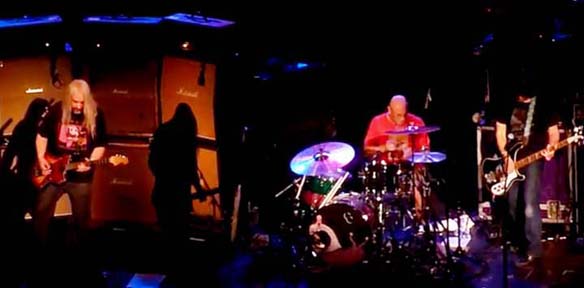
J was into hard core punk rock when he was young. Some of his favorite bands were the Stooges, the Ramones, Minor Threat, Birthday Party, and The Rolling Stones. He was not into hippies or drugs. He played drums in his first hardcore band, Deep Wound, formed in 1982. He then switched to playing guitar and formed Dinosaur in 1984 (the jr. was added to the name later) with bassist Lou Barlow, and drummer Murph. J was the primary songwriter, and after the first album became the lead vocalist. The band became a cult phenomenon, is loved by skateboardists, and was an inspiration to many bands that would later spawn the Seattle grunge/alternative scene of the 1990s, including Nirvana. Dinosaur jr. themselves finally got a major label recording contract in 1990, just as the grunge alternative period was exploding. The band had a great run of albums starting in 1985, changed members a few times, and then disbanded in 1997, leaving an impressive body of work that covered a wide variety of musical styles. J Mascis + The Fog came next in 2000, along with a Stooges live tribute band that included original Stooges members. That ended when the Stooges actually reformed as a result, and the seeds of Dinosaur reforming were set in motion. J drummed in the band Witch in 2005. In 2007 the original Dinosaur jr. lineup made a welcome return with the excellent album, Beyond. Dinosaur hit us again in 2009 with another masterwork, Farm. In 2010 J played drums and guitar in another side band, Sweet Apple. And those are just the highlights among many other projects J has worked on through the years.
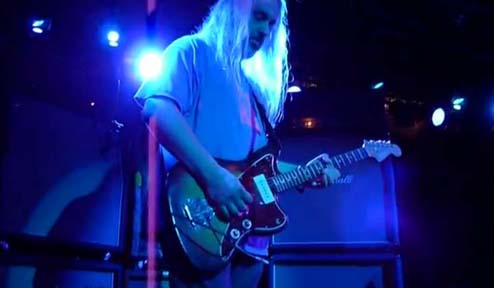
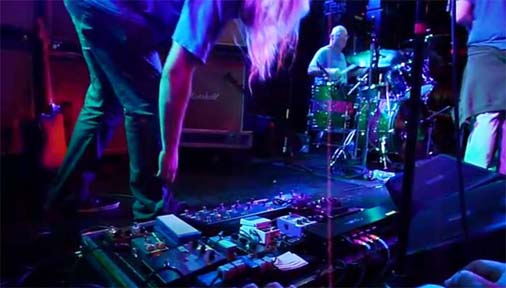
J's songs rock with melancholic and melodic riffs and hooks that you can't help but get addicted to. He is a gear head, with a love for great guitars, amps, fuzz, effects pedals, and tennis shoes. He has a large guitar collection, prefers to play Fender Jazzmasters and Teles, and even has his own signature Fender Jazzmaster guitar. His trademark live electric guitar sound comes from, you guessed it, an Electro-Harmonix Big Muff. A vintage mid 1970s model, now commonly referred to as the Ram’s Head version. J is also a Big Muff collector, with an extensive collection of vintage USA Big Muffs dating from the early to late 1970s. But Big Muffs are not his only love. Another of J's favorites is the vintage Univox Super Fuzz, which J also uses and collects. He is a fuzz and distortion tone enthusiast, pure and simple. Along with J's vast collection of vintage fuzz pedals are numerous fuzz pedals hand-built by various boutique makers, and J is always always trying whatever is new. For the previous Dinosaur jr album, Farm, J used a lot of different fuzz pedals, such as the Super Fuzz, Roland BeeBaa Fuzz, Analog Man Sun Lion, and Big Cheese Love Tone into a Vox Super Berkely or tweed Fender Deluxe.
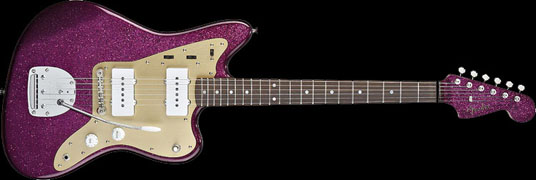
The Fender J Mascis signature Jazzmaster guitar
J just released his first official studio solo album, Several Shades of Why, which surprisingly (or unsurprisingly, if you have followed his career) is a stripped down acoustic album, not electric. Full of hauntingly beautiful songs, very melodic playing, and some of most soulful singing I have ever heard from J. Shades stemmed from his solo acoustic live shows back in the early 2000s. Recorded at J's home studio, the album features several of J’s friends accompanying him on various acoustic instruments, and some lovely chord progressions and delicate acoustic leads played by J. There are sprinklings of his colorful fuzz effects pedals, adding subtly aggressive layering to some of the songs, all played using acoustic guitars. Shades has a folksy rock feel to it, similar to Neil Young, Crosby Stills and Nash, Kurt Vile (who plays on the album) and even the acoustic side of Alice in Chains, but I can't really compare J to any of them. He has his own style and mood going on here, very different to anything else I have heard. This has become one of my all-time favorite albums, and I hope this is not the last of this style of music we get from him.
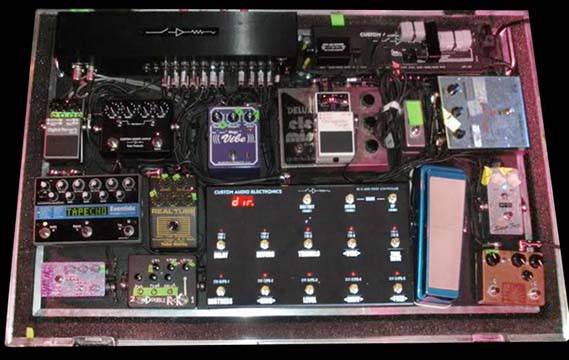
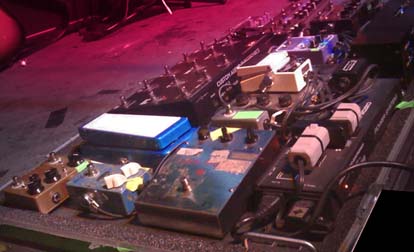
A few recent J Mascis 2010-2011 pedal boards with Custom Audio Electronics (Bob Bradshaw) RS-5 switching system. J's pedals include a vintage Electro-Harmonix Big Muff Pi and a Deluxe Electric Mistress, Dr. Scientist Frazz Dazzler (J combines it with an overdrive), Z.Vex custom made Double Rock (two Box of Rocks), MC-FX Super Fuzz, Analogman Sun Lion (Rangemaster/Sunface fuzz combo), RMC Wah, Tube Works Real Tube Overdriver, KR Musical Products Mega Vibe, Custom Audio Japan Twin tremolo, Boss RV-5 Digital Reverb, the Evantide Time Factor delay, Boss tuner, mute switch for the CAE, and CAE power supply. The 2012 board replaced the Sun Lion with a Mark1 Tone Bender/Treble booster combo made by Jim Roth/ a.k.a. Jerms, removed the Fraz Dazzler, switched to sn MXR Carbon Copy delay, and added an EHX POG2 and ZVex Lo-Fi Loop Junky.
J has been very busy in 2011. He toured with Sweet Apple, released, promoted, and is currently touring for the new Several Shades of Why (Sub Pop) album, played in the Neil Young tribute show at Carnegie Hall in February, did a series of shows with Dinosaur jr. in June and July, and is working on a soundtrack for the new Allison Anders movie, Strutter. On a break from the continuing tour for the Shades album, J took some time out to talk with The Big Muff Page. J speaks best through his music and lyrics, has a reputation for not being very interested in boring interviewer questions (I remember one brilliant interviewer asking "J, how come you always sound so tired?"), but is usually very talkative when it is a subject he is interested in. For what it is worth, J did not come off as terribly shy, awkward, antisocial, or any of the other things interviewers have said about him. He just seemed like a normal guy to me, and we talked gear.
A CONVERSATION WITH J MASCIS ABOUT DINOSAUR JR. GEAR, THE FUZZ MUNCHKIN, AND BIG MUFFS
Interview by Kit Rae. August 2, 2011
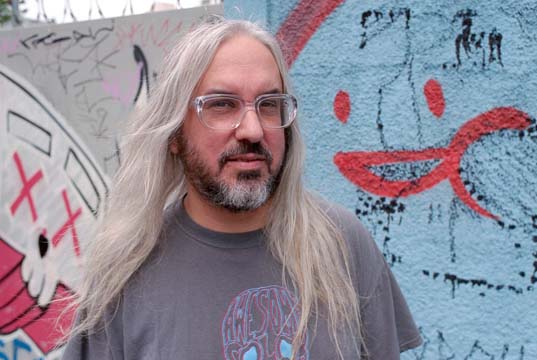
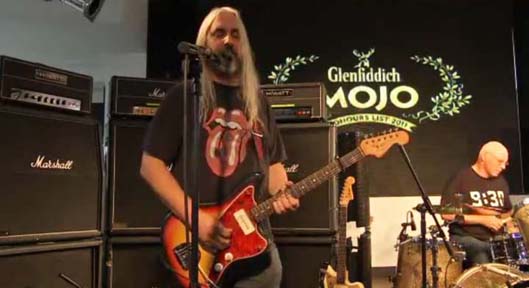
KR: Hi J. First off, I am interested in talking to you about your Big Muffs, obviously. You are not only a user, with your work in Dinosaur jr. throughout the years, but I know you are also quite a collector. I also wanted to talk a bit about the replica of your #2 Ram’s Head Big Muff that Tym Guitars will be making soon.
JM: Great.
KR: I assume you are still into these pedals today?
JM: Oh yeah. I mean I kind of got mixed up in them. I haven’t seen anything that I want to get recently.
KR: Have you photographed your current collection?
JM: Yeah. I think they are all in my China closet. I'll see if I can get you one (J's collection is pictured below).
KR: Let’s get into the first time you played a Big Muff. When was that?
JM: Well, just when I started playing guitar. I had the intention of starting Dinosaur, so I knew I needed a fuzz box. I don’t know how I came across one, maybe at the mall. I came across this Deluxe Big Muff that I bought. That’s the first one.
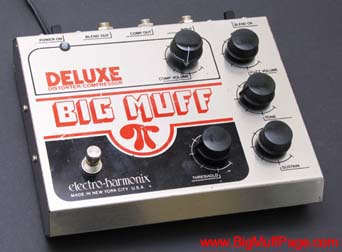 ...
...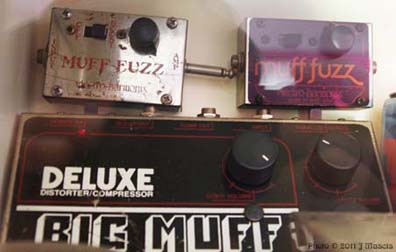 ...
...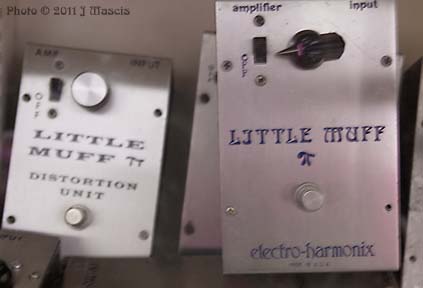
Shown above, left to right: The Electro-Harmonix Deluxe Big Muff, which was an IC based version of the circuit that included the Electro-Harmonix Soul Preacher compressor. In the middle is a rare variant color scheme version of Deluxe Big Muff and two vintage mid 1970s Muff Fuzz pedals, from J's own pedal collection. To the right are J's vintage Little Muff pedals, manufactured circa 1971. Photos © Kit Rae (left) and J Mascis (middle, right)
KR: Is that what we hear on those early Dinosaur records?
JM: Yeah, that’s on the first two albums, then it got stolen one night. Then I traded a Music Man 100 watt amp head for another one. This guy I knew had one. I didn’t like this amp too much, and he thought I was crazy to trade a whole amp for a pedal, but...
KR: Was that another Deluxe Big Muff?
JM: Yeah, but it didn’t sound quite as good somehow.
KR: The circuits changed a few times in the Deluxe Big Muffs, and there were two versions.
JM: Oh really?
KR: Yeah, minor changes, but some of them sound slightly different.
JM: It was weird. The problem I had with it is it had a weird kind of ghost fuzz, even when it was turned off, you could hear this little buzz.
KR: That sounds familiar. I have one that does the same thing. That was just the nature of the circuit. When the pedal effect is switched off, the signal is not truly bypassed but travels through one of the IC chips. The IC adds a bit of gain to the signal, so even bypassed there is a slight fuzz sound.
JM: Yeah.
KR: When did you switch to a transistor Big Muff?
JM: I guess on the first tour of the States, in Arizona (in 1987), I found this Ram’s Head Big Muff that I still use.
Shown above (left to right): J's "Ram's Head" Big Muff Pi, Deluxe Electric Mistress, and Memory Man Electro-Harmonix pedals from the late 1980's, J's 1997 rack tray effects setup built by Bob Bradshaw of Custom Audio Electronics for J, featuring a well worn vintage Ram's Head Big Muff with original knobs, from the mid 1970s, and a triangle Big Muff from the early 1970s. Note the #1 and #2 stickers added by Bob for reference to their positions in the switching system signal chain. In the middle is the same Ram's Head Big Muff, Deluxe Electric Mistress, and Memory Man, from J's 1997 rig. Note the volume and sustain pots are set to maximum, and the tone pot is set around 55% /12:30 (o'clock). On the right is J's Ram's Head as it appears at the time of this interview, well worn with tape residue and #2 sticker, and replacement knobs and pots. The tone pot is orientated in standard position now (treble is dialed left, bass to the right) indicating J's settings have not changed. Photos © Hank Reynolds (left, middle) and Tym Guitars (right).
KR: Is that the one marked #2?
JM: Yeah. I think Bob Bradshaw put a number 2 on it when it was in my rack because I had a Triangle one in there also, for some reason labeled #1 by him (KR-Bob Bradshaw put together J's first rack effects and switching setup in 1997 for the Hand it Over tour. J has since gone back to a floor effects board, but still uses a CAE switching system).
KR: That was used in the studio and on tour?
JM: Right. Yeah, that’s the main one I’ve used since then. I used them both on the rest of the tour. And then I just kind of stuck with that one and gave up on the Deluxe Big Muff, and used the Ram Head one. But I guess, I have a lot of the Ram’s Heads, but I only ever liked this one. Tim from Tym Guitars said they wired it wrong or something, and that’s why it sounded…
KR: Electro-Harmonix used a lot of different components that varied a lot on those early Muffs.
JM: He said whoever was wiring it made a mistake and wired it wrong.
KR: They were definitely not consistent with component values, but that’s why there are so many different sounding Big Muffs. That's odd if it was wired wrong. I'm not sure what could be wired wrong on it and still work... (KR - I asked Tim about this and he explained nothing was really wired or put together wrong, it just had really odd components values, very different from anything he had seen in a vintage Big Muff before. He mentioned to J that maybe EHX had made a mistake with the value of the components they used. However, the circuit in J's Big Muff is actually rather common, using the exact same component values as the standard V6 Big Muff from 1978-1984. EHX had become somewhat consistent with component value selection by this time, and seemed to be staying with a certain sound for the Muff. The same values were also used in a late model version 2 circuit variant, and the rare "tone bypass" version 3, made circa 1976. )
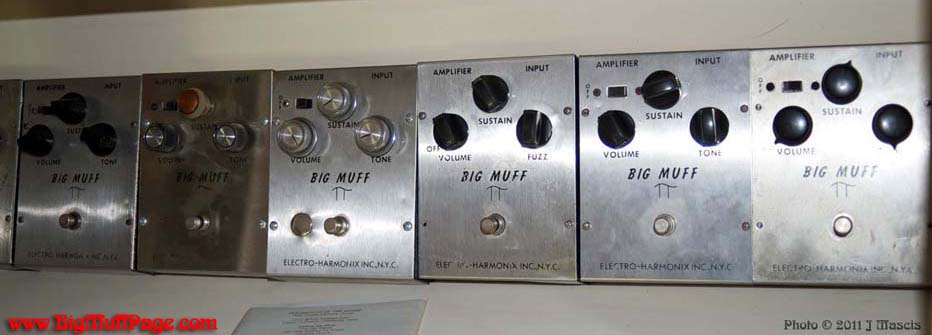
Shown above: A portion of J's vintage "Triangle" Big Muff collection. J had around ten Big muffs in 1997. That collection has grown to approximately forty now. The one in the middle with no OFF switch is the very first version of the Big Muff, circa 1970 (Photo © J Mascis)
JM: That’s why he said it sounds so different. I mean they all sound different. I have never really played two that sounded the same.
KR: I have examined the circuits in the Big Muffs I have collected. Out of the twenty Ram’s Heads that I have owned, or twenty-two now I think, twelve of them have very different circuits, as far as the component types and values go.
JM: Right.
KR: They had a lot of variance in sound. How did you graduate from that first Ram’s Head into collecting Big Muffs?
JM: Just when I started to get more money from touring. I found this shop on tour, Guitar Maniacs in Tacoma,Washington. He had tons of effects for sale, and I had never seen a lot of them. I think he had some older Big Muffs. Ram Head ones. He had a blue Ram’s Head that he sold me. Then I would go to certain shops, some of them were dealing in vintage effects back then. Whenever I would see them I would just buy them, and then after a while I had a bunch of them. You know, I had the blue one, then a purple one…
KR: Were these mostly the vintage USA Big Muffs? I see a lot of Triangle and Ram’s Head Muffs in your collection. Did you get into the Russian made Big Muffs at all?
JM: No. I got into the Triangles just a little bit, but mostly just the Ram Head ones. Do you have a lot of different colored Ram Heads?

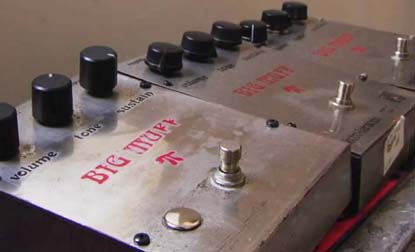
Shown above: A portion of J's vintage red and black "Ram's Head" Big Muffs. Note the one in the middle (top photo) is missing the word ON, indicating this was one of the first version 2 Big Muffs made with red ink. These were also the first to use the traditional Daka-Ware style knobs that would be used by Electro-Harmonox throughout the mid to late 1970s (Photo © J Mascis). The bottom photo shows a trio of J's Ram's Head Big Muffs.
KR: I probably have owned at least one with every different ink color that EHX ever used. I think there were five or six different ink colors used back then.
JM: I have purple, blue, red and black.
KR: It is rare that you find two Ram’s Heads with the exact same circuit, but some of the purple and blue ones had the exact same circuit repeated over and over, which we call the "violet" version. That’s a particularly good sounding circuit, probably not like your #2 though, especially if it had a mistake causing it’s unique sound.
JM: Exactly.
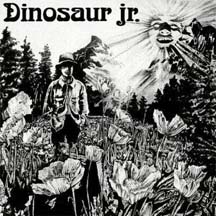 ..
..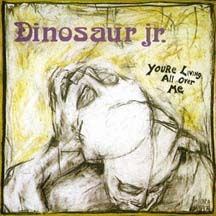 ..
..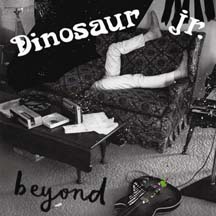 ..
..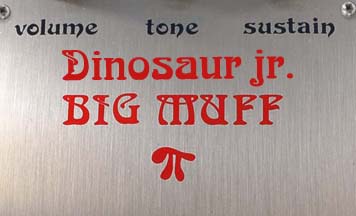
Shown above: Three Dinosaur jr. album covers. Note that the band logo just so happens to be the same Arnold Böcklin typface used by Electro-Harmonix in the 1970s, and it just so happens is the exact same typeface used on J's favorite Big Muff, the Ram's Head. Coincidence?
HISTORY OF THE BIG MUFF PART 2 (Russian)
HISTORY OF THE BIG MUFF PART 3 (modern USA)
© Kit Rae. This page is not authorized, affiliated, or associated with Electro Harmonix in any way
Website and contents ©2007 and ©2010 Kit Rae. All rights reserved. Linking to this website is allowed, but copying the text content is strictly prohibited without prior authorization. No part of this work may be reproduced, stored in a retrieval system, or transmitted in any other form, or by any means, electronic, mechanical, photocopying, recording, computer networking, or otherwise without prior permission in writing from the copyright holder(s).
Kit’s Secret Guitar, Gear, and Music Page
Guitar stuff, gear stuff, soundclips, videos, Gilmour/Pink Floyd stuff, photos and other goodies.
Contact: [email protected]
Copyright Kit Rae.
VISIT MY SWORDS, KNIVES and FANTASY ART WEBSITE www.kitrae.net



